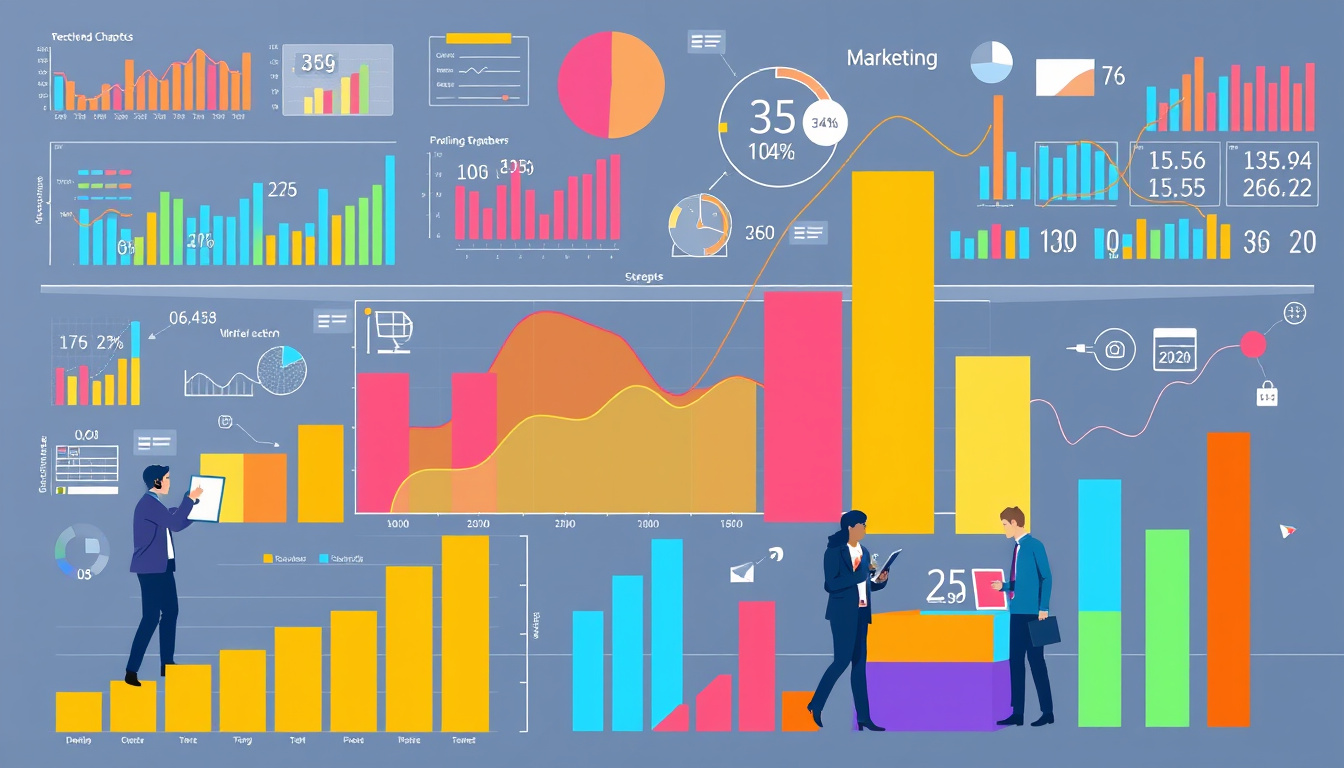Unlocking Insights: The Ultimate Guide to Data Visualization Tools for Effective Analysis
Today, data drives our work and choices. Companies and experts use tools to change raw data into clear images. These images help us see patterns and details. They also help teams talk fast and work well.
Data visualization tools turn rows of numbers into charts, maps, and graphs. The tools join data to pictures so you can spot trends without extra steps. Designers can craft visuals; analysts find patterns; marketers show metrics; journalists tell stories. The goal is to let data speak in clear, quick images.

What Are Data Visualization Tools?
Data visualization tools work by linking numbers to clear images. The tool takes data and makes graphs, maps, and interactive panels. Users see trends and links in one glance.
• Designers build neat visuals.
• Analysts find hidden edges.
• Marketers show their work in images.
• Journalists tell data stories fast.
Data and images bring facts to life.
Why Is Data Visualization Important?
Data pictures speed up the view of big sets of numbers. They help teams choose the next step. The pictures give a common look so all can talk the same way. With clear images, the data tells its own story.
Key Features of the Best Data Visualization Tools
When you pick a tool, check these points:
• Clear design: A simple look helps every user start fast.
• Data strength: The tool must work with many numbers and join different files.
• Visual choice: Many chart types and maps help you tell the story.
• Links and sharing: The tool should work with many source files and let you share your work on web pages or slides.
• Cost and help: The price must feel right, with real support when you need it.
Leading Data Visualization Tools You Should Know
1. Tableau
Tableau takes your numbers from files or cloud systems to build tough charts and maps.
• Strengths: Many chart types, live interactive panels, strong map work, and plenty of how-to guides.
• Limits: The desktop costs $70 per month per user, and the free version does not hide data.
Tableau fits users who want many chart choices, especially maps.
2. Flourish
Flourish helps you tell a data story with many ready templates. You do not need code to build clear charts and maps. Developers may add many tweaks if needed.
• Strengths: No coding, strong story features, easy to add to web pages, and clear on mobile.
• Limits: It fits best for stories, not always for business charts.
Flourish fits writers, teachers, and those who need to show data with care.
3. Microsoft Excel and Power BI
Excel, known for sheets, builds many basic charts. In contrast, Power BI gives smart boards and deeper work.
• Strengths: Excel is wide spread; Power BI joins well with Microsoft tools.
• Limits: Excel may fall short with huge numbers; Power BI takes some time to learn.
They help teams who already use Microsoft systems.
4. Infogram
Infogram is a drag-and-drop tool that builds clear charts and maps. It works well for reports and quick web images.
• Strengths: Easy to use for those without design skills; interactive outcomes; free plan exists.
• Limits: It joins fewer data sources than some others.
5. Datawrapper
Datawrapper fits fast work in news and web pages. It builds charts and maps that show on sites with a quick setup. It even checks the color design for all users.
• Strengths: A simple interface; clear for news work; interactive results.
• Limits: It works with few data files; paid plans can cost more.
6. ChartBlocks
ChartBlocks lets you build custom charts by linking to your data files—even live feeds. It is fit for those who need images on web pages.
• Strengths: A wizard helps you build charts; free and low-cost plans exist.
• Limits: It does not work with maps; the API strength may be unclear.
7. D3.js
D3.js is a JavaScript library that builds custom images on the web. This tool needs coding but lets you control every detail.
• Strengths: Total control and fit for unique projects.
• Limits: It takes time and a good grasp of JavaScript.
How to Choose the Right Data Visualization Tool
Pick a tool that fits your work:
• Skill level: If coding is hard work for you, use a tool with drag-and-drop features, like Flourish or Infogram. Those who code lean to D3.js.
• Task: For business charts and live panels, try Tableau or Power BI. For clear stories, try Flourish or Datawrapper.
• Data size: Make sure the tool will work with large sets of numbers.
• Cost: Check that the price feels right, and try free versions if you can.
• Links: Verify the tool can join with your source files and share the images in the needed formats.
Conclusion
Data visualization tools show clear paths from rows of numbers to clear images. They help in making good choices and spread clear ideas. Whether you work in business, writing, marketing, or education, the right tool brings data into view.
Try these tools to find the match for your work. Each tool helps make data clear and aids in smart steps forward.
